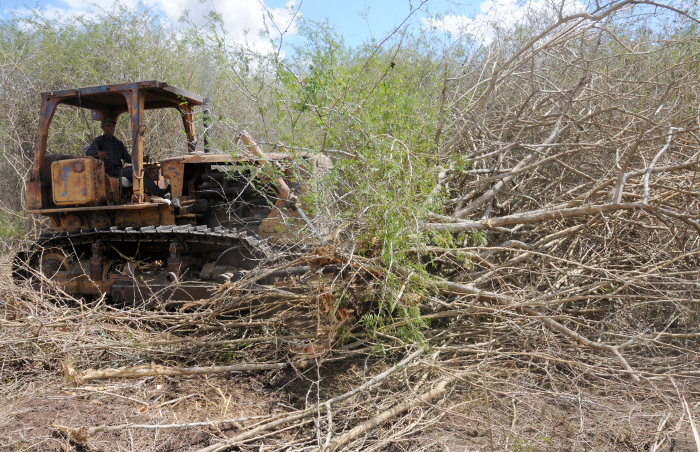CAMAGÜEY- The infestation of the areas destined for crops and livestock with marabú is an undeniable reality in Cuba; in Camagüey alone, 192 842.57 hectares, approximately 17 per cent of the agricultural surface in the territory, are occupied by this invading plant. However, little is known about the effects of the Dichrostachys cinerea (scientific name) in the soil fertility and quality and its use in making food for animals.
Such analysis came up during the first workshop-school made, this Wednesday in the Convention Center Santa Cecilia, by the leaders of the scientific international collaboration project “Multidisciplinary ecofriendly approaches to control and handle marabú in the mid-eastern region of Cuba”, developed by the University of Camagüey Ignacio Agramonte (UC) and Ghent in Belgium.
Redimio Manuel Pedraza Olivera, doctor in Veterinary Science, tenure professor of the UC and promoter of the project of Cuban behalf, acknowledged as one of the main challenges, the need to make that the marabú, under proper handle, can be integrated in a more sustainable agriculture.
“This species has among its potentialities the benefits it brings to soil. It is necessary to study a strategy for the sustainable handle at the time of the clearing. That it permit to keep the organic matter and minimize the impact of the use of heavy machinery and chemical products that can intensify the process of soil degradation”.
During the workshop, with the participation of students, executives of the provincial delegation of the Ministry of Agriculture, academics and farmers, it was pointed out, among the many uses of the woody plant, that it is a source of energy, it also constitutes a shelter for wildlife, it is a source of food for herbivorous animals and it has several applications for animal and human medicine. It was recognized also its favorable impact in the family economy in the rural environment since its wood can be used in crafts, in making charcoal and fence posts.
The project, financed by VLIR UOS, sets its bases in the sustainable handle of the natural resources in fuction of mitigating and adapting to climate change, and assumes as general objective to contribute to a better support for agriculturists and the food independence of the Mid-Eastern part of Cuba.
- Translated by Elianna Díaz Mendieta



